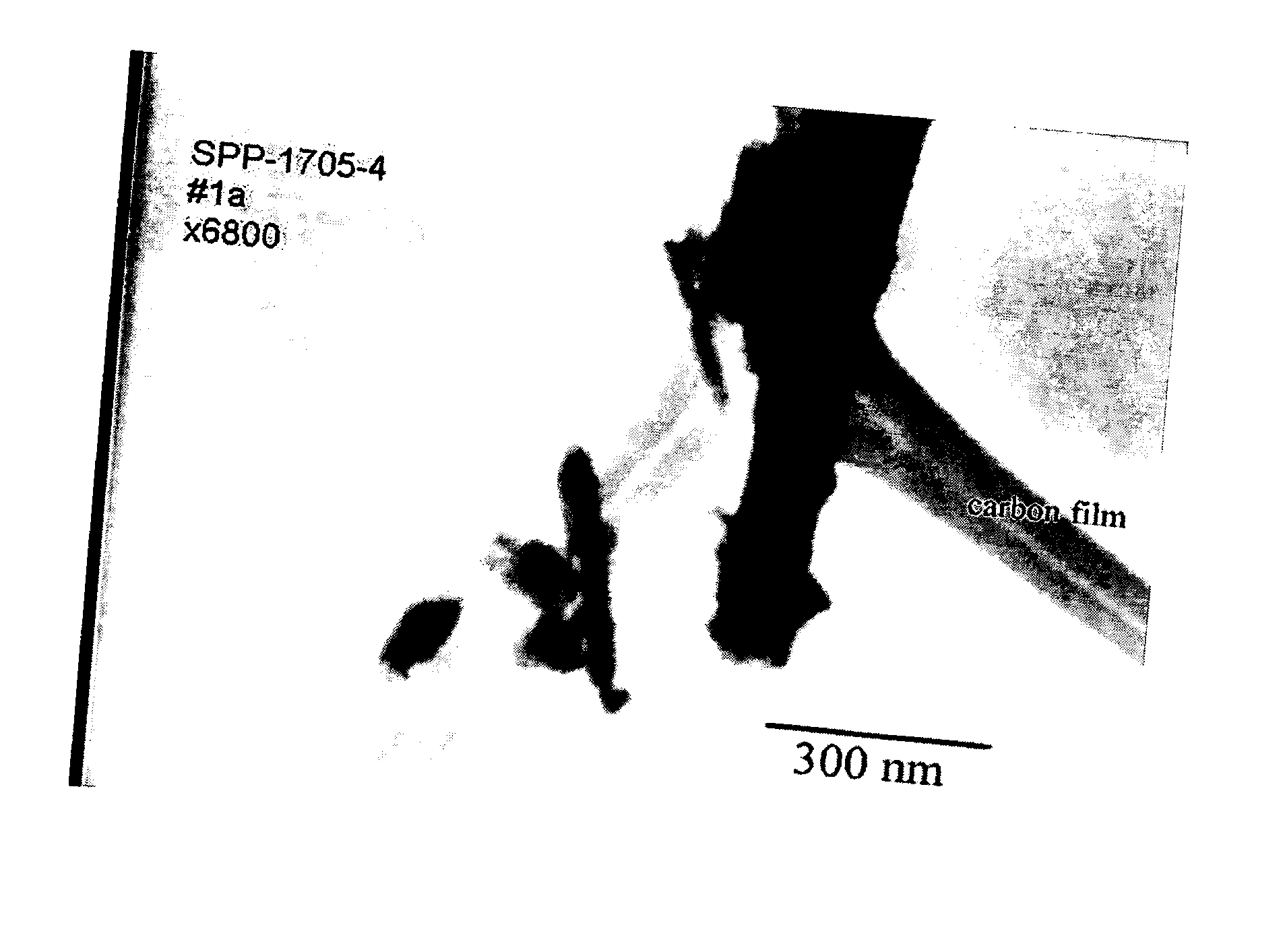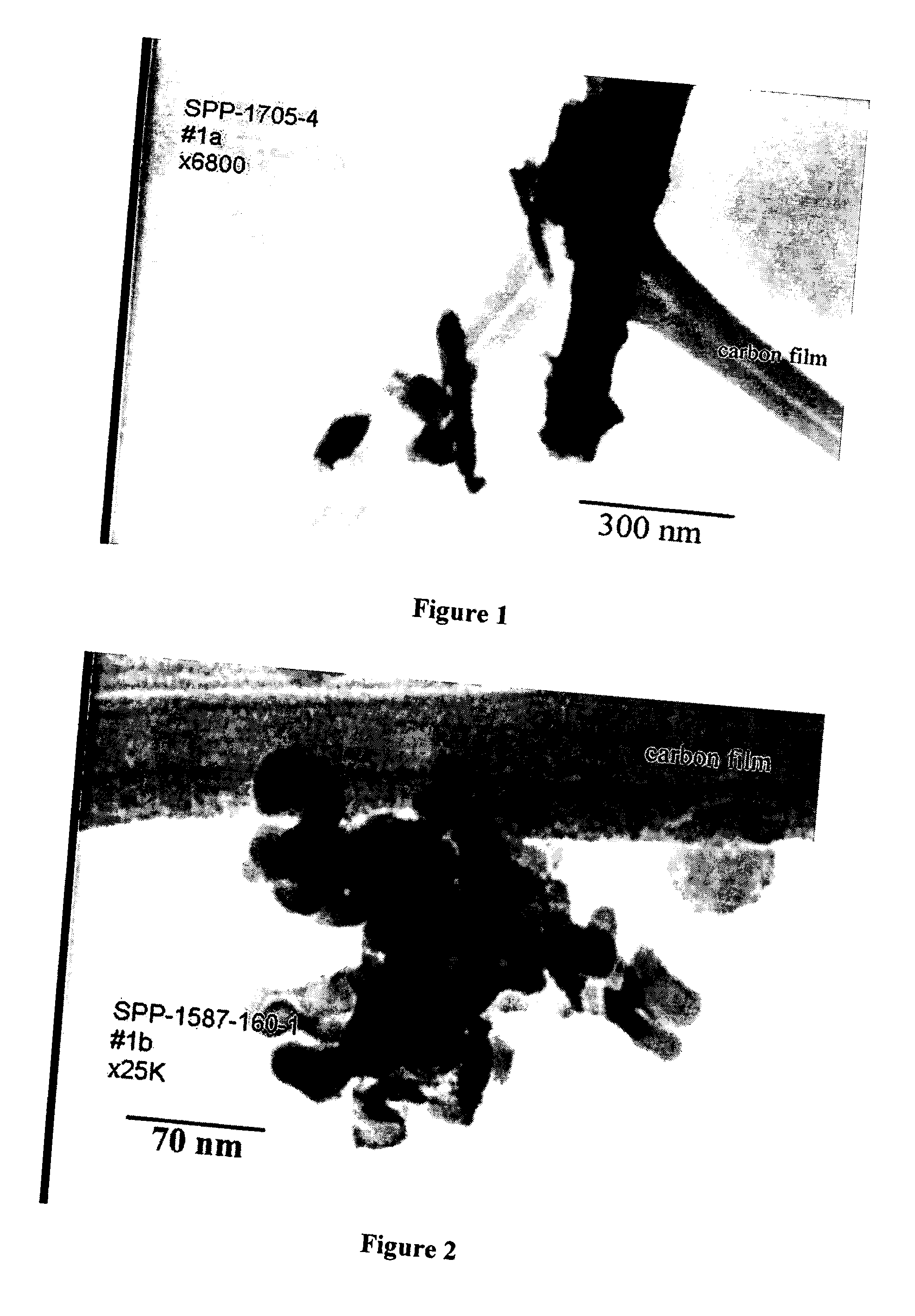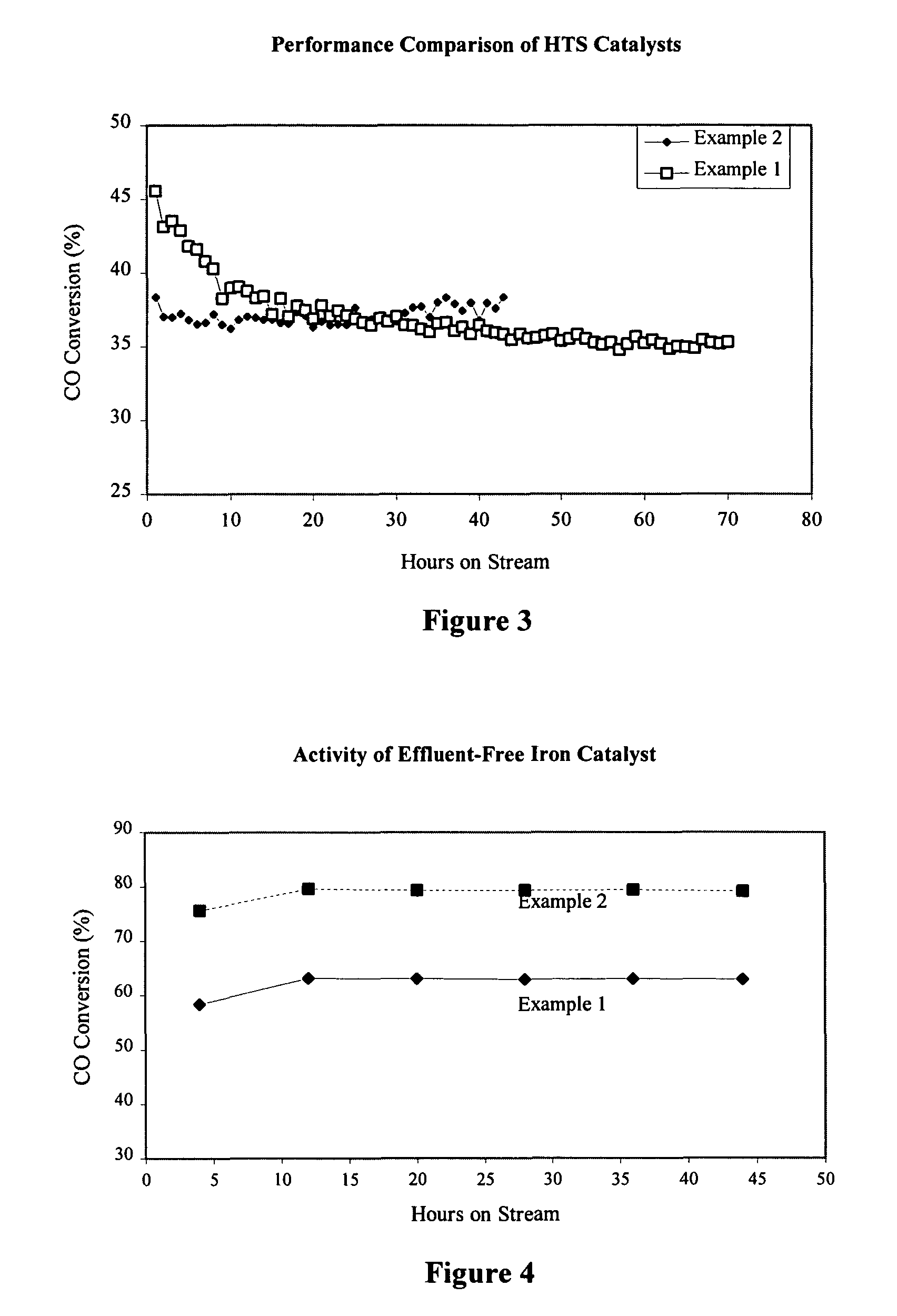High temperature shift catalyst prepared with a high purity iron precursor
a high temperature shift and catalyst technology, applied in the direction of physical/chemical process catalysts, other chemical processes, separation processes, etc., can solve the problems of methanol and ammonia plants in the chemical industry consuming considerable quantities of hydrogen, synthesis gas produced by steam reforming hydrocarbons is typically not suitable for industrial applications, and the hydrogen balance at petroleum refineries is going negative. to achieve the effect of producing more efficiently
- Summary
- Abstract
- Description
- Claims
- Application Information
AI Technical Summary
Benefits of technology
Problems solved by technology
Method used
Image
Examples
example 1
[0029] A comparative sample of a high temperature water gas shift catalyst is prepared by a prior art precipitation method as follows:
[0030] About 2000 grams of 50% of sodium hydroxide is first diluted with about 14 liter of deionized water in a precipitation vessel. About 8298 grams of iron sulfate, or about 9828 grams of iron nitrate mixed with about 775 grams of sodium chromate and 243 grams of copper sulfate, is slowly pumped in under vigorous agitation and with air sparging. A constant precipitation temperature is maintained at 45.degree. C. until the pH reaches a value of about 7.5 and the excess caustic is between 0.8-1.2 g / 100 cc. The total precipitation time takes about 60 minutes. With air sparging continuing, the precipitation tank is maintained at about 45.degree. C. for approximately 2 hours to age the catalyst precursor. The temperature is then raised to approximately 65.degree. C., and when 65.degree. C. is reached the slurry is transferred to a thickening tank, where...
example 2
[0031] A sample of a high temperature water gas shift catalyst is prepared by the inventive method presented herein as follows:
[0032] A stainless steel air sparger is fitted into the bottom of a 50 gallon Nalgene drum. About 36 gallons of deionized water and about 16.5 pounds of formic acid (90%, commercially available through Specialty Chemical Co. LCC, Cleveland, Tenn., USA) is added to the drum and thoroughly mixed. About 40 pounds of iron powder (commercially available from Pyron, Niagara Falls, N.Y., USA and designated by product code AC-325) is added to the formic acid solution with mixing. The iron powder is added slowly enough to maintain a reaction temperature of less than about 120.degree. F., and preferably less than about 100.degree. F.
[0033] After the iron powder is added and a slurry has formed, compressed air is passed through the sparger. The air flow is continued and the reaction temperature is held at about 100.degree. F. until essentially all the free iron is cons...
example 3
[0036] A sample of a HTS catalyst is prepared by the inventive method presented in Example 2 except the iron powder AC-325 is replaced by Hogans AB (Hogans, Sweden) ASC-300, and the aeration time is increased to about 48 hours.
PUM
| Property | Measurement | Unit |
|---|---|---|
| pKa | aaaaa | aaaaa |
| particle size | aaaaa | aaaaa |
| pKa | aaaaa | aaaaa |
Abstract
Description
Claims
Application Information
 Login to View More
Login to View More - R&D
- Intellectual Property
- Life Sciences
- Materials
- Tech Scout
- Unparalleled Data Quality
- Higher Quality Content
- 60% Fewer Hallucinations
Browse by: Latest US Patents, China's latest patents, Technical Efficacy Thesaurus, Application Domain, Technology Topic, Popular Technical Reports.
© 2025 PatSnap. All rights reserved.Legal|Privacy policy|Modern Slavery Act Transparency Statement|Sitemap|About US| Contact US: help@patsnap.com



